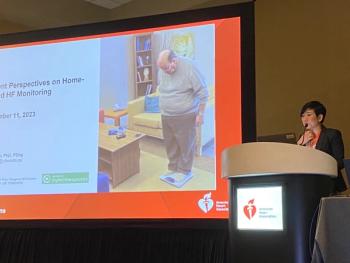
AI May Be Able to Help Diagnose Osteoarthritis Early
Artificial intelligence can locate tibial spiking in x-ray images, which many believe to be an early sign of knee osteoarthritis.
Artificial Intelligence (AI) may someday be able to replace human physicians when it comes to determining the development of knee osteoarthritis, according to a new report.
The research found an AI-based model could identify a key indicator of early osteoarthritis based solely on x-ray images. The development could potentially lead to considerable savings in healthcare costs by streamlining the diagnostic process. The model was developed by investigators from Finland’s University of Jyväskylä and the Central Finland Health Care District.
The findings were
According to data from the
The problem, according to Anri Patron, the research assistant who developed the model, is that early diagnosis typically relies on analysis by experienced specialists using imperfect classification systems.
“The aim of the project was to train the AI to recognize an early feature of osteoarthritis from an x-ray – something that experienced doctors can visually distinguish from the image, but cannot be done automatically,” Patron said, in a press release.
Specifically, the investigators focused on the presence or absence of spiking on the tibial tubercles in the knee joint because tibial spiking has been identified as a probable sign of early osteoarthritis.
Patron and colleagues used more than 700 x-ray images to develop their AI model, and then validated the model using around 200 images. They found their model was able to match a physician’s estimate of tibial spiking around 87% of the time, a figure Patron said is promising.
This is not the first effort to use AI to identify osteoarthritis in the knee. Sami Äyrämö, M.Sc., Ph.D., who heads the University of Jyväskylä’s Digital Health Intelligence Laboratory, said previous investigators have already developed AI models that can identify knee osteoarthritis, but he said those models are built to identify severe cases of the kind that would be easily identified by physicians.
“However, the previously developed models are not accurate enough to detect the early-stage manifestations,” he said, in the press release. “The model now being developed aims for, in particular, early detection from x-rays, for which there is a great need.
In theory, such a model could allow general practitioners to identify patients developing osteoarthritis and launch interventional strategies without the need for extra tests (such as MRIs) or trips to see specialists, the authors said.
“In addition, the patient can be motivated to take measures to slow down or even stop the progression of osteoarthritis,” said Juha Paloneva, MD, Ph.D., the chief executive of the Central Finland Health Care District. “In the best possible scenario, the patient might even avoid joint replacement surgery.”
The investigators cautioned that their work is subject to limitations. Among them is the fact that tibial spiking, while widely seen as an early sign of osteoarthritis, is not currently included in the diagnostic criteria for the disease. Furthermore, the authors said, the definition of tibial spiking itself is imprecise.
“The lack of shared criteria for grading tibial spiking casts doubt on the generalizability of the model developed in the present work, as different experts might have divergent views on how the spiking of tibial tubercles manifests in the radiographs,” the authors noted in their study.
Still, they noted that the results of their experiment suggest that tibial spiking is associated with other signs of knee osteoarthritis, bolstering the case for its utility in diagnosis. Assuming the association between tibial spiking and osteoarthritis is valid, they said, their research shows AI can provide significant value and efficiency in the diagnostic process.
Newsletter
Get the latest industry news, event updates, and more from Managed healthcare Executive.



















































